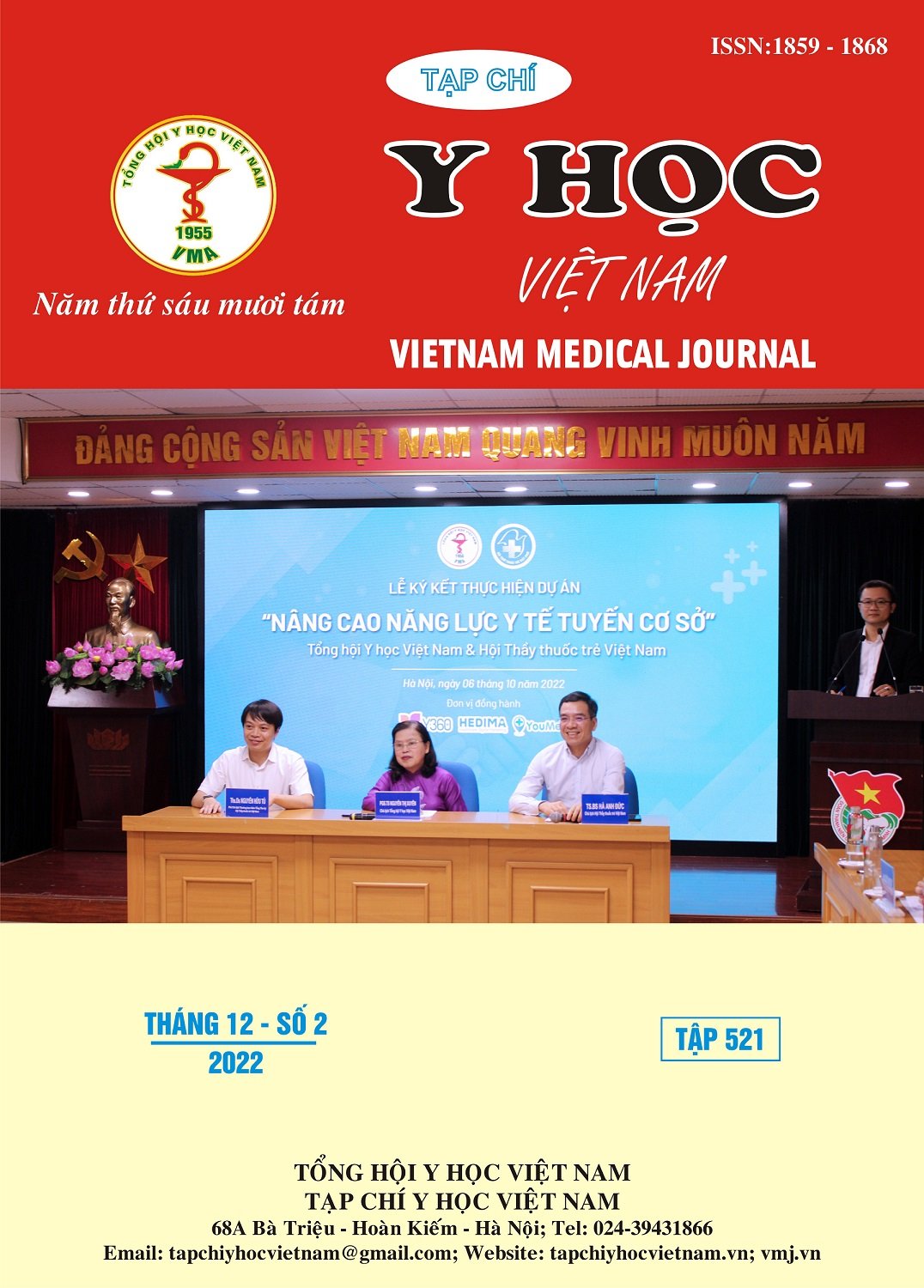HISTOPATHOLOGICAL FEATURES OF INTRAHEPATIC CHOLANGIOCACINOMA ACORDING TO WHO 2019 IN BACH MAI HOSPITAL FROM 2019 TO 2022
Main Article Content
Abstract
Introduction: Intrahepatic cholangiocarcinoma (ICC) is a heterogeneous group of malignancies, ranking second in malignancies of the liver after hepatocellular carcinoma. In 2019, the World Health Organization (WHO) released a new classification including two main groups: large duct type ICC and small duct type ICC and rare subtypes. Objectives: Determine the rate of histological types of intrahepatic cholangiocarcinoma according to WHO 2019 and compare the two main histological types with some histopathological-clinical characteristics. Methods: Including 34 cases of ICC were operated at Bach Mai hospital from January 2019 to June 2022. Research results: Large duct type accounted for 41.2%, small duct type 50.0%, 02 cases of adenosquamous carcinoma and 01 case of lymphoepithelioma-like carcinoma. Moderately differentiated tumors accounted for 61.8% and poorly differentiated tumors accounted for 38.2%. pT1 was dominant with 73.5%. The rate of lymph node metastasis was 26.5%, vascular invasion was 20.6% and perineural invasion was 50.0%. Large duct type ICCs were associated with higher perineural invasion (p=0.020) and mean preoperative serum CA19-9 levels were several times higher than those of small duct type (p<0.001). No relationship was found between histopathological subtypes with factors such as tumor size, histological grade, pT, lymph node metastasis and vascular invasion (p> 0.05). Conclusion: Large duct type accounted for 41.2%, small duct type 50.0%. Large duct type ICCs are associated with perineural invasion and mean preoperative serum CA19-9 levels are higher than those of small duct type.
Article Details
Keywords
Intrahepatic cholangiocarcinoma, histopathology, Large bile ducts, Small bile ducts
References
2. Altman A.M., Kizy S., Marmor S. et al. (2018). Current survival and treatment trends for surgically resected intrahepatic cholangiocarcinoma in the United States. J Gastrointest Oncol, 9(5), 942–952.
3. Chan K.-M., Tsai C.-Y., Yeh C.-N. et al. (2018). Characterization of intrahepatic cholangiocarcinoma after curative resection: outcome, prognostic factor, and recurrence. BMC Gastroenterol, 18, 180.
4. Sigel C.S., Drill E., Zhou Y. et al. (2018). Intrahepatic Cholangiocarcinomas Have Histologically and Immunophenotypically Distinct Small and Large Duct Patterns. Am J Surg Pathol, 42(10), 1334–1345.
5. WHO Classification of Tumours Editorial Boad (2019), Digestive System Tumours, .
6. He C., Zhang Y., Song Y. et al. (2018). Preoperative CEA levels are supplementary to CA19-9 levels in predicting prognosis in patients with resectable intrahepatic cholangiocarcinoma. J Cancer, 9(17), 3117–3128.


